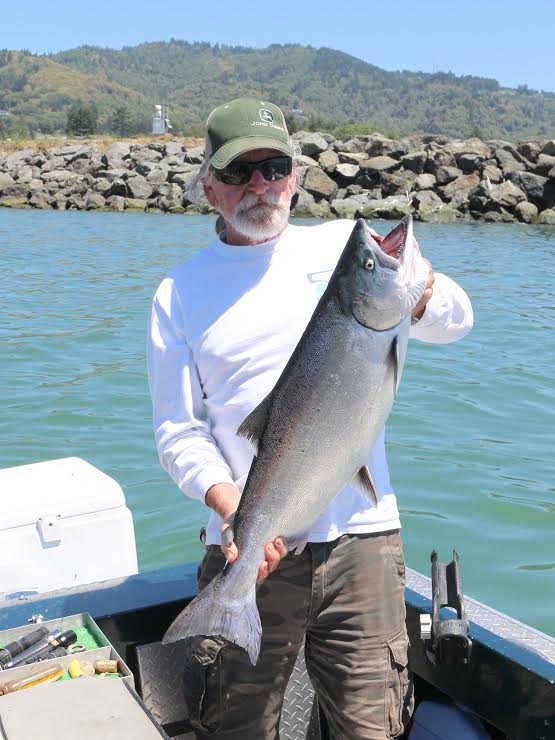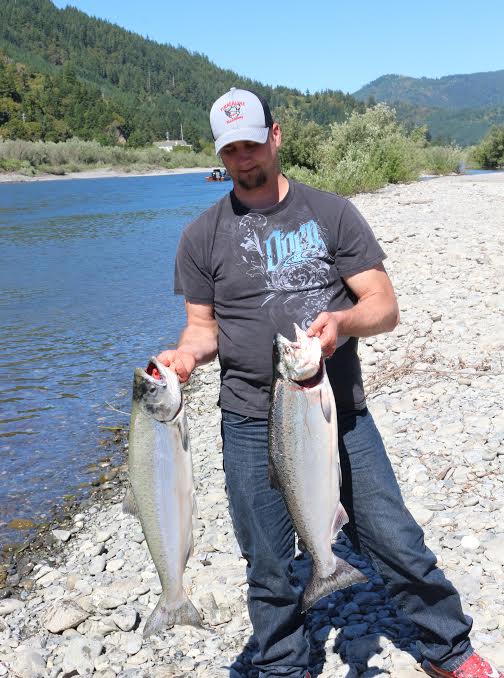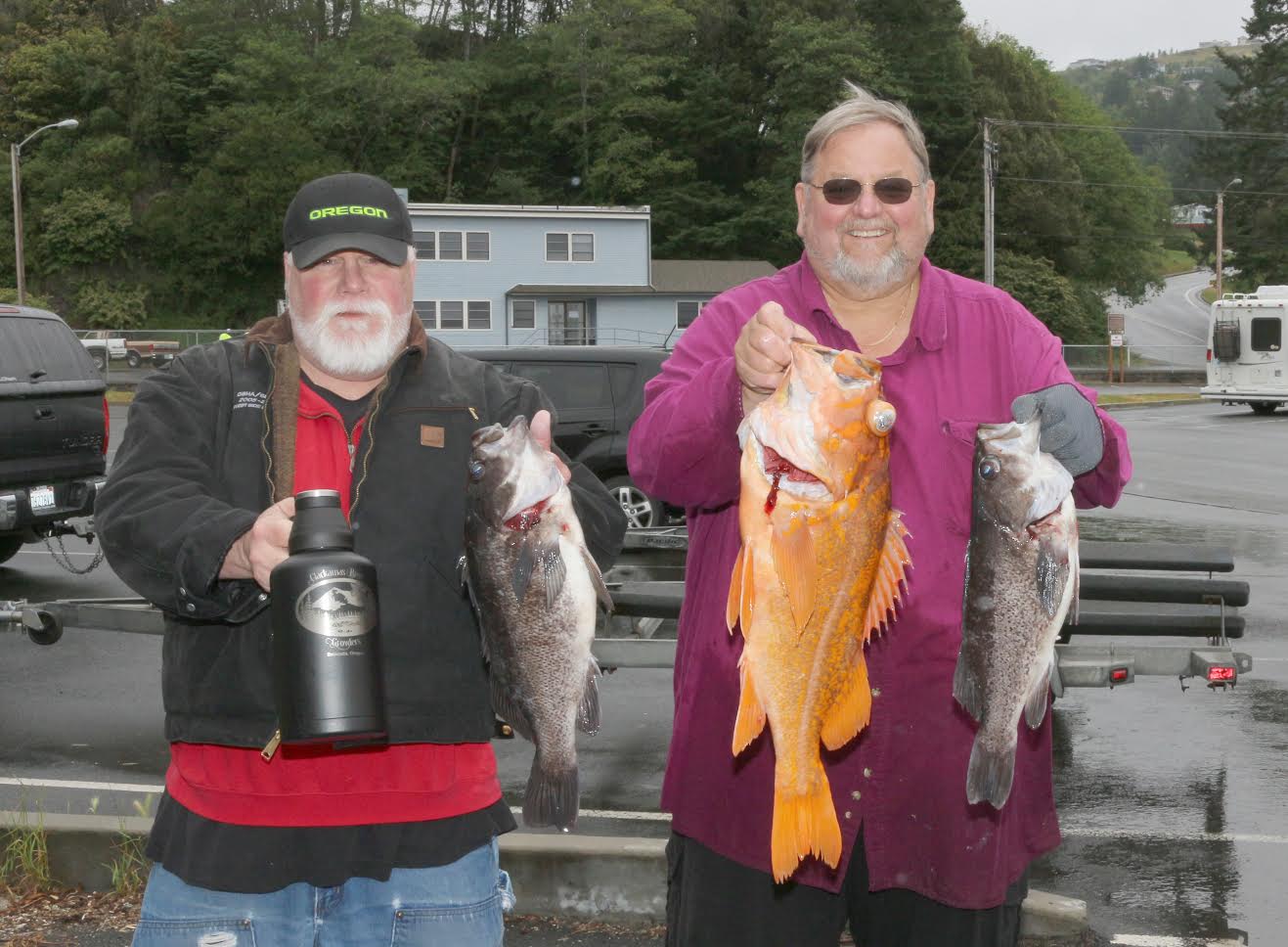Spinnerbait/Anchovy Rigs Part II

by Larry Ellis
7-1-2017
Website
Last week we took a look at the nuances of hooking up a naked (straight bait) anchovy in a spinnerbait/anchovy rig that is used for trolling in estuaries in the pacific northwest such as the Rogue Bay or the mouth of the Chetco River. This week we will look at some tips and tricks at rigging up this baitfish powerhouse and the finer points of trolling this rig in the aforementioned bays.
For the best results, rig up exactly this way.
First of all, the leader should be made of 25- to 30-pound monofilament, with my preference being 25-pound test, and the leader should be exactly 60-inches (5-feet) long. Lex's Landing in Gold Beach sells straight bait setups rigged exactly this way.
I also recommend using two 6-bead bead-chain swivels leading to the leader in order to prevent line twist.
Resist the temptation of putting the second bead-chain swivel in the middle of the leader. Doing so prevents the continuity, practicality and effectiveness of using a full 5-foot leader because metal is heavier than monofilament. I also firmly believe that salmon can see the second bead chain, preventing possible strikes from occurring.
To most effectively use the double 6-bead bead-chain setup, make sure that the first bead-chain swivel comes already attached to the leader end of your wire spreader. On the end of the first bead-chain swivel, tie an 8- to 10-inch piece of 40-pound monofilament.
At the end of this short piece of monofilament, tie your second 6-bead bead-chain swivel. I like to tie a small Duo-Lock snap to the beginning of the 5-foot leader so you can interchange leaders easily as needed. Lex's straight bait leaders already have one of these snaps tied on the beginning of the leader.
Trust me, this way of hooking up a double bead-chain swivel setup really works well. It worked really well on guide Jack Hanson's boat last week when three of us each tagged a large wild salmon on the Chetco.
I really prefer using a strait bait anchovy whenever possible, and I prefer it for the following reason. You can put a faster, tighter spin on the anchovy and troll it slower than usual, yet still get that fast-as-a-drill bit spin. Chinook basically like things trolled as slowly as possible and they will attack these rapidly-spinning baits that barely crawl through the water column with gusto.
Don't get me wrong. You will still want to carry plenty of the standard beaded spinnerbait/anchovy rigs that allow you to interchange spinner blades rapidly, and there are times when they will get bit more often. It's just my personal feeling that a naked anchovy will get more strikes because it allows you to troll it slower than its beaded cousin.
If possible, I also like to use a wire spreader that already has a bead-chain swivel attached to the leader end, and with all the moss that's been plaguing the estuaries, I also like to use a plastic bead-chain moss protector. If you can't find these things, Larry at Lex's will make one up for you for a nominal fee.
On the end of your 20-inch dropper of 15-pound monofilament, snap or loop on a cannonball sinker ranging from 2 to 4 ounces.
If you are trolling against a strong current, then use a heavier sinker. If the current is weaker such as within 1/2 hour of the peaks of high or low tide, or if you are trolling with the current, switch to a lighter sinker.
At the Rogue Bay, the typical drill is to troll closer to the lower end of the bay near the cat houses and the sand spit at low tide, and as the tide progresses, troll further up the bay in front of Jot's Resort, under the Patterson Bridge and in front of Lex's Landing near Indian Creek. But all these rules were made to be broken.
Newsflash! A large school of anchovies moved into the Chetco Bay a few weeks ago, and with the baitfish, Chinook followed. Folks have been hooking up using straight bait rigs, and some bankies have been doing well using 1-ounce Krocodile spoons - I saw it happen in real time!
"The scent of the anchovies have been drawing salmon into the Chetco Bay," said guide Jack Hanson of Jack's Guide Service.
When Jack isn't clobbering springers on the Klamath or the Rogue, he has been hammering kings in the Chetco Bay using the aforementioned straight bait setups with the only exception being that Hanson prefers using the Glido Sliding Spreader.
I was one of the lucky anglers who got a 20-pound salmon last week while fishing with Hanson.
I think my next book will be entitled: I DO KNOW JACK - AND HE'S ONE HECK OF A FISHERMAN!
Remember on the Chetco, the limit is only one wild Chinook a day - 5 wild Chinook per year. Hatchery kings can make up the other half of the limit.
Tight lines!
Larry Ellis, author, writer, columnist and photographer has had a 50-year passion for fishing in California and Oregon's saltwater and freshwater venues. He is a well-known writer for Oregon, Washington and California Fishing and Hunting News, Northwest Sportsman, California Sportsman and Pacific Coast Sportfishing. He currently writes monthly for Salmon Trout Steelheader Magazine, and is the author of two books, "Plug Fishing for Salmon" and "Buoy 10, the World's Largest Salmon Run." Both books can be bought from Amato Publications (amatobooks.com), Amazon and eBay. Ellis particularly loves living in his hometown of Brookings, Oregon - The heart of salmon country and gateway to fishing paradise.
More Reports
Time to troll the Rogue Bay
Rogue River- Lower
6-24-2017
Sweltering hot inland temperatures are expected to raise the temperature of the lower Rogue River to 70-plus degrees. On Thursday,...... Read More

6-17-2017
When I was a lad, I was always the last person to leave the lake, river or ocean because I...... Read More
